Marine Corps Cpl. Derian Webber fast ropes from a CH-53E Super Stallion during a course at Marine Corps Base Camp Lejeune, N.C., July 22, 2021.
Providing up-to-date information, news and original content on American Military issues.
Marine Corps Cpl. Derian Webber fast ropes from a CH-53E Super Stallion during a course at Marine Corps Base Camp Lejeune, N.C., July 22, 2021.
July 27, 2021 | BY David Vergun , DOD News
Army Gen. James H. Dickinson said today that the role of the Space Force is to organize, man, train and equip space forces, while Spacecom employs those forces in operations.
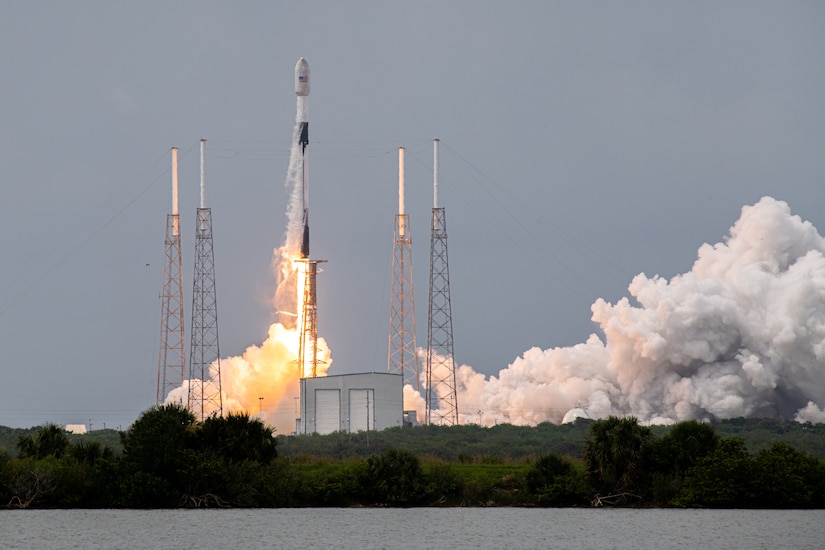
Both Spacecom and the Space Force were created because of the threat from adversaries in the space domain and the need to protect and defend space assets from those adversaries, he said.
Dickinson noted that the mission of Spacecom is to deter a war beginning or extending into space, and, should deterrence fail, Spacecom is prepared to fight and win with the help of the other combatant commands, allies and partners.
"Our adversaries have militarized space. And in response, we have established the structures necessary to protect and defend our assets against those capabilities," he said.
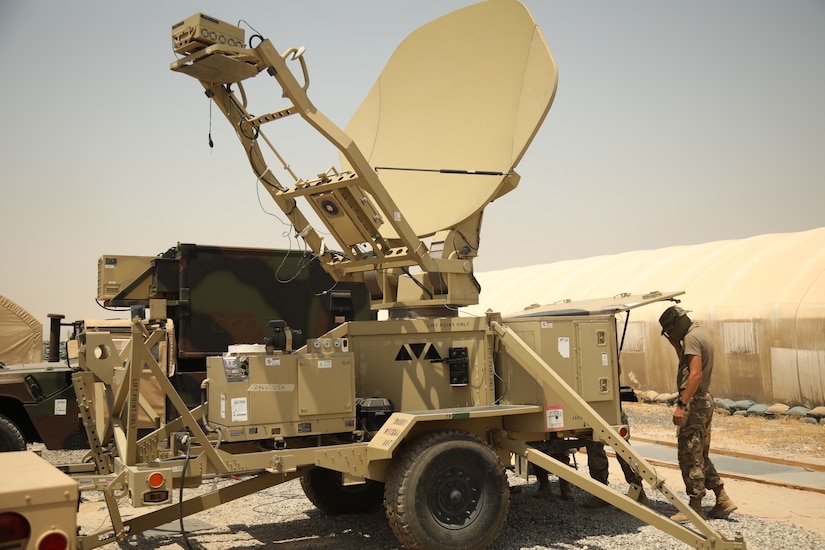
"Many Americans still don't quite grasp how important our assets in space really are and don't understand how their daily lives are tied to assets in space. Space-based capabilities enable virtually every element of our national power, including diplomacy, economics, finance and information," he said.
Space is vast and complex, Dickinson said. Spacecom's area of responsibility extends about 100 kilometers above the Earth and extends into infinity.
"[Spacecom] simply can't go it alone. We are closely aligned and in sync with all the 11 other combatant commands," he said, noting that U.S. Cyber Command, in particular, plays a critical part in space capability, along with the National Reconnaissance Office.
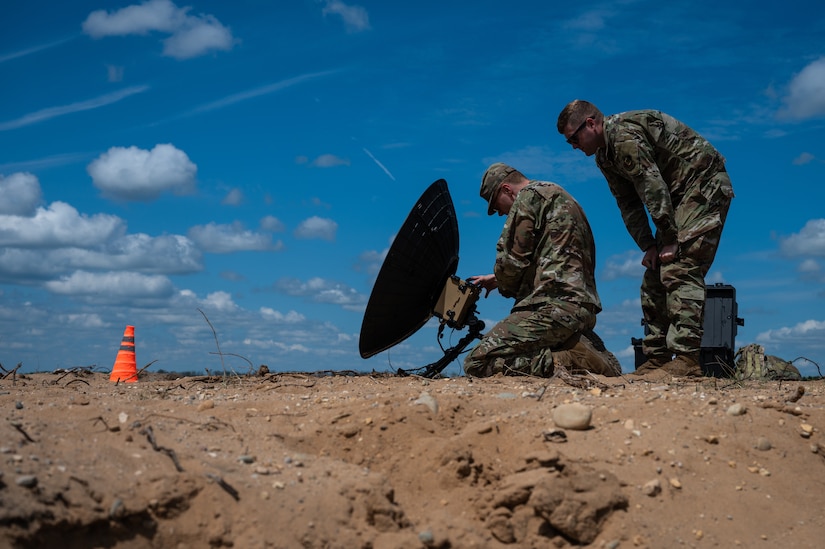
Spacecom is also partnered with industry, he said. The Commercial Integration Cell has been stood up now for quite some time at Vandenberg Air Force Base, California. "We have an incredible number of commercial partners who are willing and able and want to be part of the team.
"So, this is a very exciting time in terms of both our work within the whole of government, as well as those with our commercial partners," he said.
As for the Spacecom workforce, Dickinson said it is looking not only for the best and brightest in the science, technology, engineering and math fields, but also lawyers, planners and other non-STEM personnel who can contribute to the mission.
"Those skills sets together in the combatant command is what really makes us powerful and able to go quickly and to be agile enough in this changing environment that we're seeing in the space domain," he said.
Airmen provide aircraft security during Talisman Saber at Royal Australian Air Force Base Tindal, Australia, July 18, 2021. The exercise is designed to strengthen capabilities to respond to security concerns in the Indo-Pacific region.
July 27, 2021 | BY C. Todd Lopez , DOD News
The Defense Department today revealed the prisoner of war/missing in action commemorative poster which, leading up to POW/MIA Recognition Day in September, will highlight ongoing efforts made by the department to provide the fullest possible accounting of the soldiers, sailors, Marines and airmen still missing from past conflicts.
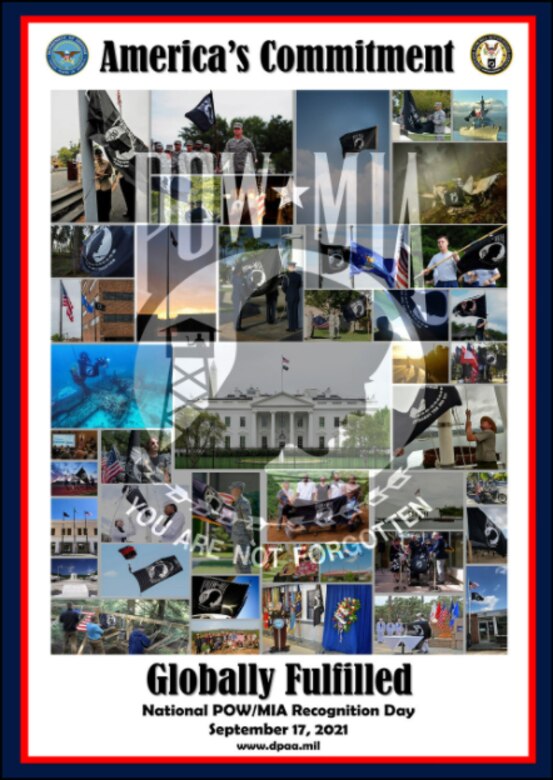
Each year, the department creates a poster in advance of POW/MIA Recognition Day, which will be commemorated on Sept. 17.
Deputy Defense Secretary Kathleen H. Hicks explained that since the Revolutionary War, more than a half-million U.S. service members have, at one point in time, been held as prisoners of war.
Today, nearly 82,000 service members remain unaccounted for, from conflicts dating back to World War II, she said. More than 72,000 of those were lost during World War II, nearly 8,000 from the Korean War, and around 1,600 remain unaccounted for from the Vietnam War.
The department remains committed to bringing all of them home, she said.
July 27, 2021 | BY Terri Moon Cronk , DOD News
Patricia Montes Barron discussed "Food Security in the Military: What We Know and Why It Matters," at CSIS today. The U.S. Department of Agriculture defines food insecurity as a lack of consistent access to enough food for an active, healthy life. Those serving on active duty, in the military reserves or in the National Guard experienced food insecurity at double the national average in recent months, according to nationwide surveys. And anecdotal evidence points to heightened rates of food insecurity among U.S. veterans during the COVID-19 pandemic, reports show.
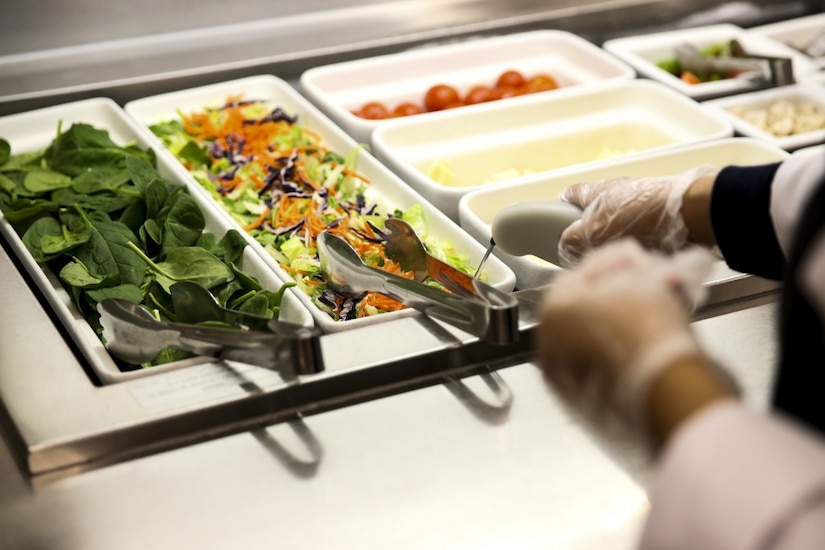
Barron said her office has been hard at work since April to develop a plan for the Defense Department that everybody can wrap their arms around. "We've also started to work with the USDA, and we've just gotten approval to work with the Census Bureau on a military family focus panel," she added.
Food insecurity is one of Secretary of Defense Lloyd J. Austin's III high priorities, she said. "He wants to make sure we're addressing this and getting to it as quickly as we can … [via] Congressional interest, as well as discussions with [the White House's initiative] Joining Forces," she noted.
"We are gathering data and analyzing relevant statistics, which are going to help us better scope the problem," Barron said. "And while my office is taking the lead, we can't do this alone. We need all of DOD and other federal agencies to work together with us."
Trained members of the Military Family Life Counselor Program will help with assessment tools to assist MC&FP in determining if people counselors deal with need nutritional support, she said, adding that the DOD Federal Financial Readiness Office is also developing an assessment tool and will work closely with MC&FP to make sure families know what financial resources are available.
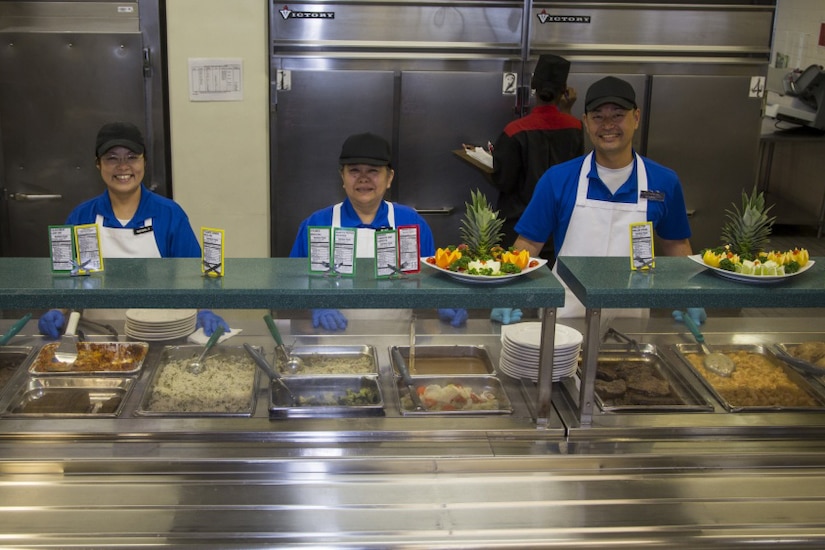
Barron said proper nutrition is vital for readiness and national security . "[If] you are not getting nutritious food, you're not feeding your body and you're not feeding your mind to do the very best that you can do," she said.
"[We're] asking our service members and their families to basically go where they need to go live, give up jobs for spouses," Barron said. "[And] we ask an awful lot of our families, and especially our children who have to move from place to place. Shouldn't we provide them with the very best care that we can? A military family should not have any challenges with food. …We have a plethora of resources; we just need to make sure that our families are aware of them and can take advantage of them."
She said food insecurity is an individual experience, but it's also a family, community and national experience, too. "And if you're not at your best, if you're worried that your family isn't getting enough to eat or if you're worried your family isn't getting the right types of things to eat, that can really impact the overall presence of service members trying to do their jobs and their missions."
Air Force Staff Sgt. Jacob Lara, left, and Senior Airman Matthew Arellano carry a canoe while competing in the Chaos Challenge 2021 at Joint Base Elmendorf-Richardson, Alaska, July 15, 2021. The winner of the multiday event will go on to compete in the 2021 Lightning Challenge to determine the Air Force's best two-person tactical air control party team.
Air Force Staff Sgt. Hannah Pieper and Airman 1st Class Sandra Felix test equipment at Andersen Air Force Base, Guam, July 26, 2021.
The USS America conducts a replenishment with the Australian frigate HMAS Ballarat during Talisman Saber in the Coral Sea, July 27, 2021. The exercise is designed to strengthen capabilities to respond to security concerns in the Indo-Pacific region.
Army Spc. Vuongkhang Luong participates in Orient Shield at Aibano Training Area, Japan, June 24, 2021. The bilateral exercise enhances long-range interception capabilities.
Army Lt. Col. Delubio Rezende, 412th Theater Engineer Command medical advisory officer and medical liaison, gets his nose swabbed for a COVID-19 test as part of pre-mission preparation for exercise Dalan ba Dame 2021 on Andersen Air Force Base in Yigo, Guam, July 16, 2021.
Navy Petty Officer 3rd Class Bryan Reed, assigned to Michaud Expeditionary Medical Facility, prepares supplies for COVID-19 vaccines being administered at Camp Lemonnier, Djibouti, July 8, 2021. Camp Lemonnier is an operational installation that enables U.S., allied and partner nation forces to be where they're needed to ensure security in Europe, Africa and Southwest Asia.
Service members help present the American flag during Military Monday, a community event, at Frontier Park in Cheyenne, Wyo., July 26, 2021.
An airman assembles the framing for structure during a joint training exercise at Gowen Field, Boise, Idaho, June 10, 2021.
A soldier provides ground guidance for an M1A2 SEP V2 Abrams Tank at Ware Range, Fort Benning, Ga., July 20, 2021.
Air Force Tech. Sgt. Jonathan Hall and Staff Sgt. Cecilia Nguyen change a propeller on a C-130J Super Hercules at Ali Al Salem Air Base, Kuwait, July 11, 2021.
A Marine observes a beam hooked to a CH-53E Super Stallion during helicopter support team training at Camp Lejeune, N.C., July 22, 2021.
Air Force Staff Sgt. Troy Gonzalez Mazzone and Senior Airman Drew Bowers participate in building-clearance training in Savannah, Ga., July 22, 2021.
Marines prepare for a boat assault force training exercise aboard the USS New Orleans during exercise Talisman Saber in the Coral Sea, July 20, 2021. The large-scale bilateral exercise between Australia and the United States involves more than 17,000 participants from seven nations.
A Marine jumps into a pool during a swim qualification at Marine Corps Base Camp Pendleton, Calif., July 7, 2021. Marines are required to requalify annually to ensure mission readiness, comfortability in the water and quick response time.
Air Force Tech. Sgt. Jacob Fountain, left, and Master Sgt. Gary Bryant, both 815th Airlift Squadron loadmasters, hold on after opening an aircraft cargo door ramp while pilots conduct low-level tactical flight patterns during training at Joint Base Elmendorf-Richardson, Alaska, July 13, 2021.
“As America’s 26th Secretary of the Air Force, Frank Kendall III’s decades of expertise and impact in service to our national security and defense make him an unmatched asset for the challenges we face today. Throughout his career, Frank has led the Department’s acquisition efforts to equip our warfighters with the latest capabilities and cutting-edge weaponry for the battlefield, educated our next generation of leaders at West Point, and served as a human rights lawyer. And as a former active duty soldier, Frank understands firsthand the commitment and sacrifice our troops give day in and day out.
No doubt, our Airmen, Guardians, and their families will be served well. I thank the Senate for his confirmation, and I look forward to Frank joining the team.” – Secretary of Defense Lloyd J. Austin III
July 27, 2021
Good evening, everyone. It’s great to be here in Singapore, and it’s an honor to be giving what I’m told is the 40th Fullerton Lecture. IISS has done an outstanding job enriching our dialogue about the Indo-Pacific. And James, thanks to you and John for all that you’ve done to make this event possible. It’s also great to see Senior Minister Teo and Minister of Defense Ng —thank you both for your hospitality.
Now, we are meeting in difficult times… but we’re working with our friends so that we all come out of the pandemic stronger than before.
I’m here to represent a new American administration, but also to reaffirm enduring American commitments. And above all, I want to talk about the strategic imperative of partnership.
You know, I learned a core lesson over four decades as a soldier, in peace and in war: Nobody can go it alone, at least not for very long. We are far stronger, and for far longer, when we come together than when we let ourselves be split apart.
And the United States and this region are more secure and more prosperous when we work together with our allies and partners.
Together with our friends, we face a range of challenges in this region that demand common action. There are transnational threats, like the pandemic and the existential threat of climate change… the specter of coercion from rising powers… the nuclear dangers from North Korea… the struggles against repression inside countries such as Myanmar… and leaders who ignore the rule of law and abuse the basic rights and dignity that all people deserve.
We will meet those challenges together.
In the days ahead, I’ll travel from Singapore to see my counterparts in Vietnam and the Philippines. I’ve come to Southeast Asia to deepen America’s bonds with the allies and partners on whom our common security depends. Our network of alliances and friendships is an unparalleled strategic asset. And I never take an ally for granted.
Together, this region can rebuild from the pandemic… and move forward to an even brighter future, in an even stronger rules-based international order.
And that means more security… more stability… more prosperity… more resilience… and more openness.
We’re proud to renew a longstanding, bipartisan belief… that our partnerships are especially vital in times of great challenge and change.
All of our countries have suffered from Covid-19, and it is still taking a terrible toll.
Yet the Indo-Pacific has been tested before. Our recent history has been marked by grave crises—and by inspiring efforts to tackle them in common purpose.
We’ve seen it over and over again, from the aftermath of World War II… to the frost of the Cold War… to the panic of the 1997 financial crisis… to the ravages of the 2004 tsunami. Yet at so many key junctures, the countries of the Indo-Pacific resisted the temptation to turn inward… and instead forged strong ties, and built a more inclusive, and secure, and prosperous region.
Today, amid this merciless pandemic, we stand together at another hinge moment… and we face another choice between the power of partnership and the dangers of division.
I am confident that—through our collective efforts—the Indo-Pacific will again rise to the challenge. And America will be right at your side, just as an old friend should.
And after COVID-19, we don’t believe that the goal should just be to return to the way that things were. We stand ready to work together, as President Biden says, to “build back better.”
So the central question for us all is: How can we unite to recover and to rebuild? And how do we work hand in hand to forge a more resilient regional order?
We think that the answer involves three components—and all of them are rooted in the imperative of partnership.
First, the most urgent task is recovery. We must redouble our fight against COVID and raise up a safer, healthier, and more prosperous future.
Second, we must look further ahead… and invest in the cooperation, and the capabilities, and the vision of deterrence that will meet the security challenges here in Southeast Asia and across the Indo-Pacific.
And third, we must recommit ourselves to the great, long-term project of coming together as Pacific states to build a free and open region… one that stretches toward new horizons of partnership, prosperity, and progress.
Let me talk a bit more about those three areas.
First, recovery. We must focus on the fundamentals: working urgently together to tackle the COVID crisis and to restore the region’s economic dynamism.
The pandemic has reminded us how deeply our world is interwoven. Today, a threat to global health anywhere is a threat to security everywhere.
So the United States has been rushing urgently needed assistance across the Indo-Pacific. That includes testing equipment, oxygen supplies, PPE, ventilators, and storage for vaccines.
And my team has been pushing hard to find other ways to help… including providing logistics support, establishing mobile clinics, and offering new military medicine training.
But global recovery requires global vaccination. So we are rushing life-saving vaccine doses to the region. President Biden has committed to deliver more than 500 million shots world-wide over the next year, and the Indo-Pacific is a top priority. You know, in just the past two months, we have shared some 40 million doses throughout the region, including Indonesia, Laos, Malaysia, the Philippines, South Korea, Taiwan, Thailand, and Vietnam.
Now, the vaccines developed in the United States are medical miracles. They’re incredibly effective at saving lives and preventing serious illness. And you know what… They’re free. No conditions. No small print. And no strings attached. Because this is an emergency. And that’s what friends do.
So we’ll keep working to end this plague… for everyone, and everywhere. And we’ve watched with admiration as countries across this region have come together to fight it.
When India was besieged, its friends stepped up. We salute Singapore for rushing to the scene, with two C-130s carrying some 250 oxygen cylinders. And Singapore has three new vaccine-production facilities planned or under construction, which will help more rapidly deploy vaccines throughout the region in future crises.
Meanwhile, through the Quad’s vaccine initiative, India, Japan, Australia, and the United States have committed to producing and delivering a billion vaccine doses, right here in the Indo-Pacific.
And South Korea is aiming to produce up to a billion vaccine doses this year. To help, the United States and South Korea have established a comprehensive Global Vaccine Partnership.
The pandemic is still raging. The road to recovery will be long. Yet these partnerships reflect our common determination and our common humanity.
And that brings me to the second way that our teamwork can create an even stronger region… and that is by coming together to tackle current and emerging challenges in the region that is the highest strategic priority for the Department of Defense.
Now, President Biden has made clear that the United States will lead with diplomacy. And the Department of Defense will be here to provide the resolve and reassurance that America’s diplomats can use to help prevent conflict from breaking out in the first place. As I’ve said before, it’s always better to stamp out an ember than to try to put out a blaze.
So deterrence remains the cornerstone of American security. And for decades, we have maintained the capabilities, the presence, and the relationships needed to ward off conflict and to preserve the stability that lies at the heart of our shared prosperity.
Yet emerging threats and cutting-edge technologies are changing the face and the pace of warfare. So we are operating under a new, 21st-century vision that I call “integrated deterrence.”
Now, integrated deterrence means using every military and non-military tool in our toolbox, in lock-step with our allies and partners. Integrated deterrence is about using existing capabilities, and building new ones, and deploying them all in new and networked ways… all tailored to a region’s security landscape, and in growing partnership with our friends.
And so together, we’re aiming to coordinate better, to network tighter, and to innovate faster. And we’re working to ensure that our allies and partners have the capabilities, the capacities, and the information that they need.
With our friends, we are stepping up our deterrence, resilience, and teamwork, including in the cyber and space domains.
We’re working with our hosts here in Singapore to enter a new phase in cyber-defense cooperation. We’re partnering with Japan to deploy new sensors in space to better detect potentially threatening behaviors… and exploring similar opportunities with other friends.
And I’m especially pleased that Singapore has chosen to invest in the F-35 Joint Strike Fighter. That’s going to boost our collective capabilities… and open up new opportunities for high-end combined training.
Integrated deterrence also means working with partners to deter coercion and aggression across the spectrum of conflict… including in the so-called “grey zone” where the rights and livelihoods of the people of Southeast Asia are coming under stress. That’s why we’re working to strengthen local capacity and to bolster maritime-domain awareness, so that nations can better protect their sovereignty… as well as the fishing rights and the energy resources afforded them by international law.
Meanwhile, we’re improving interoperability across our security network. And that includes more complex exercises and training. In Japan, for example, we recently wrapped up an ambitious, large-scale exercise… in which U.S. and Japanese forces together conducted the first successful firing of a High Mobility Artillery Rocket System in Japan.
And we recently held the exercises known as Pacific Vanguard and Talisman Sabre off the coast of Australia, together with Japan, Australia, and the Republic of Korea. That underscored our ability to carry out integrated, high-end maritime operations with our allies.
I’m especially encouraged to see our friends building stronger security ties with one another, further reinforcing the array of partnerships that keeps aggression at bay.
Meanwhile, we are working with Taiwan to enhance its own capabilities and to increase its readiness to deter threats and coercion… upholding our commitments under the Taiwan Relations Act, and consistent with our one-China policy.
At the same time, we’re moving to enhance our combined presence in the Indo-Pacific with other close partners and allies. Take Britain’s historic deployment of a carrier to the Pacific. The HMS Queen Elizabeth is sailing through this region as the flagship of a multi-nation carrier strike group that includes a U.S. destroyer and a U.S. Marine Corps F-35 squadron.
All that brings me to the final way in which we can move forward together toward the future that this region deserves.
And I speak as a representative of an Indo-Pacific country… with vital interests that are best served by a stable, open, and prosperous region.
Our strategic partnerships can carry us all closer to the historic common project of a free and open Pacific, at peace with itself and with the world… a stronger, more stable regional order where countries resolve disputes amicably and uphold all the rights of all their citizens.
To bring that day closer, we are working through old alliances, and through new partnerships, and through regional and multilateral channels—from ASEAN to the Quad to the U.N. Security Council.
We have long sought to create space for Indo-Pacific countries to realize their highest aspirations and safeguard the rights of their citizens. And these joint efforts with our friends rely on more than just intersecting interests. They draw strength from common principles.
And that means a deep belief that countries must remain sovereign and free to chart their own destinies.
A profound commitment to transparency, inclusion, and the rule of law.
A dedication to freedom of the seas.
A devotion to human rights, and human dignity, and human decency.
An adherence to core international commitments.
And an insistence that disputes will be solved peacefully.
Yet this region has witnessed actions that just don’t line up with those shared principles.
Beijing’s claim to the vast majority of the South China Sea has no basis in international law. That assertion treads on the sovereignty of states in the region. We continue to support the region’s coastal states in upholding their rights under international law. And we remain committed to the treaty obligations that we have to Japan in the Senkaku Islands and to the Philippines in the South China Sea.
Unfortunately, Beijing’s unwillingness to resolve disputes peacefully and respect the rule of law isn’t just occurring on the water. We have also seen aggression against India… destabilizing military activity and other forms of coercion against the people of Taiwan… and genocide and crimes against humanity against Uyghur Muslims in Xinjiang.
Now, these differences and disputes are real. But the way that you manage them counts.
We will not flinch when our interests are threatened. Yet we do not seek confrontation.
So let me be clear: As Secretary, I am committed to pursuing a constructive, stable relationship with China… including stronger crisis communications with the People’s Liberation Army. You know, big powers need to model transparency and communication. And we hope that we can work together with Beijing on common challenges, especially the threat of climate change.
Yet even in times of competition, our enduring ties in Southeast Asia are bigger than just geopolitics. As Prime Minister Lee has counseled, we are not asking countries in the region to choose between the United States and China. In fact, many of our partnerships in the region are older than the People’s Republic of China itself.
That’s why we are expanding our important work with countries throughout the Indo-Pacific and with ASEAN itself, a critical body that brings the region closer together… offering everyone a voice, and building deeper habits of cooperation.
And I’ll say personally that I’m proud that my predecessors and I have attended every single meeting of the ASEAN Defense Ministers Meeting-Plus… a venue that is increasingly central to the region’s security architecture.
ASEAN is also showing its ability to lead on the region’s most important issues. And we applaud ASEAN for its efforts to end the tragic violence in Myanmar. The Myanmar military’s refusal to respect the inalienable rights of the Burmese people, and to defend their basic well-being, is flatly unacceptable. A military exists to serve its people—not the other way around. And so we call on the Myanmar military to adhere to the ASEAN Five-Point Consensus and to forge a lasting peace.
As ASEAN plays its central role, we are also focusing on complementary mechanisms in the region. I know how pleased President Biden was to host the first Quad Leaders’ Summit in March. And structures like the Quad make the region’s security architecture even more durable.
We’re also taking a leading role again at the U.N. Security Council. That includes enforcing its critical resolutions about nuclear dangers on the Korean Peninsula. And we’re taking a calibrated, practical approach that leaves the door open to diplomacy with North Korea… even while we maintain our readiness to deter aggression and to uphold our treaty commitments and the will of the Security Council.
Our partnerships draw strength from our shared belief in greater openness… and our belief that people live best when they govern themselves. Now, our democratic values aren’t always easy to reach. And the United States doesn’t always get it right. We’ve seen some painful lapses, like the unacceptable and frankly un-American discrimination that some Asian Americans and Pacific Islanders have endured in my country in recent months.
I believe that we’re better than that. Far better. But we aren’t trying to hide our mistakes. When a democracy stumbles, everyone can see and hear it. It’s broadcast in loud and living color, and not hushed up by the state.
Our openness gives us the built-in ability to self-correct… and to strive toward a more perfect union. And when we come up short, when we stray from our Constitution’s wisdom, we have a pretty good track of record of owning up and trying to do better. Even in times of challenge, our democracy is a powerful engine for its own renewal. We’ve embarked upon an ambitious program to “build back better” after the pandemic. And President Biden likes to tell the world leaders he meets with that it’s “never, ever, ever been a good bet to bet against America.”
Ladies and gentlemen, what ties all of this together is one simple insight: When we work hand-in-hand with our friends, we are stronger and more secure than we could ever be on our own. And that’s what guides my approach to this most important region as Secretary of Defense.
Our alliances are an unmatched and unrivaled source of strength and security.
Our countries share the shores of the Pacific. But we also share an understanding of the power of partnership.
Geography has made us neighbors, as President Kennedy once put it. But vision and values have made us friends.
As a fellow Indo-Pacific country, we believe that the next chapter in the story of this region can be an inspiring one… a time where, as President Biden likes to say, hope and history rhyme.
So we stand together with you… as your allies, your partners, and your friends. Because we know that no one can go it alone. And we are confident that together, we can build a better and brighter future for all of our children.
Thank you very much.
July 27, 2021 | BY David Vergun , DOD News
Jan Clover Gougeon was in the Army during the 1960s. He rose to the rank of sergeant and served a tour in Vietnam before his honorable discharge in 1969.
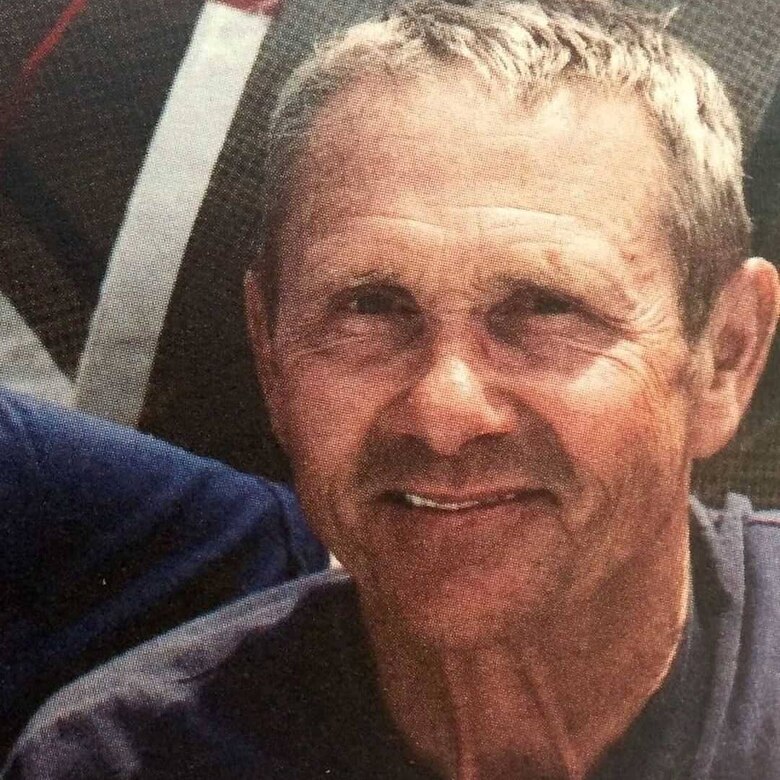
Although Gougeon was a soldier, his heart was in sailing.
After returning from Vietnam and transitioning to civilian life in late 1969, he and his brothers Meade and Joel founded Gougeon Brothers Inc.
The company began building sailboats and iceboats and found great success in formulating and marketing epoxy resins for boat construction and repair.
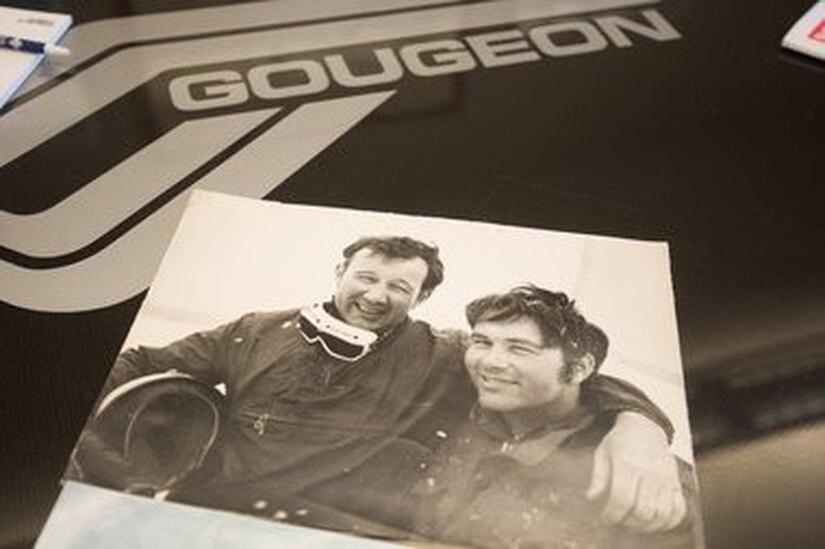
Sometimes tragedy or near-tragedy is the inspiration of invention.
On June 20, 1979, while sailing in a qualifying race for the original Single-Handed Transatlantic Race, Gougeon's self-designed and built 31-foot trimaran, "Flicka," capsized in heavy seas in the North Atlantic.
Gougeon floated on the overturned boat for four days before being rescued by a passing freighter.
It was the first and only time he had to be rescued.

Gougeon vowed to design multihull sailboats — such as catamarans and trimerans — that were self-righting, or what Gougeon called "self-rescuing."
The next boat he designed, "Splinter," was self-rescuing, as was every boat he designed afterward.
He also designed and built monohulls, including the 1975 Canada's Cup winner, "Golden Dazy."
Meade Gougeon's 1979 book "The Gougeon Brothers on Boatbuilding" was celebrated by boatbuilders and wood constructionists around the world and is in its fifth edition with hundreds of thousands of copies in print.
Although the Gougeon brothers are legendary boatbuilders, Jan Gougeon is equally famous for racing boats. His first sailboat race was in 1955 at age 10.
Aboard the "Splinter," Gougeon placed first in single-handed Michigan races from Port Huron to Mackinac Island in 1981, 1982 and 1983.
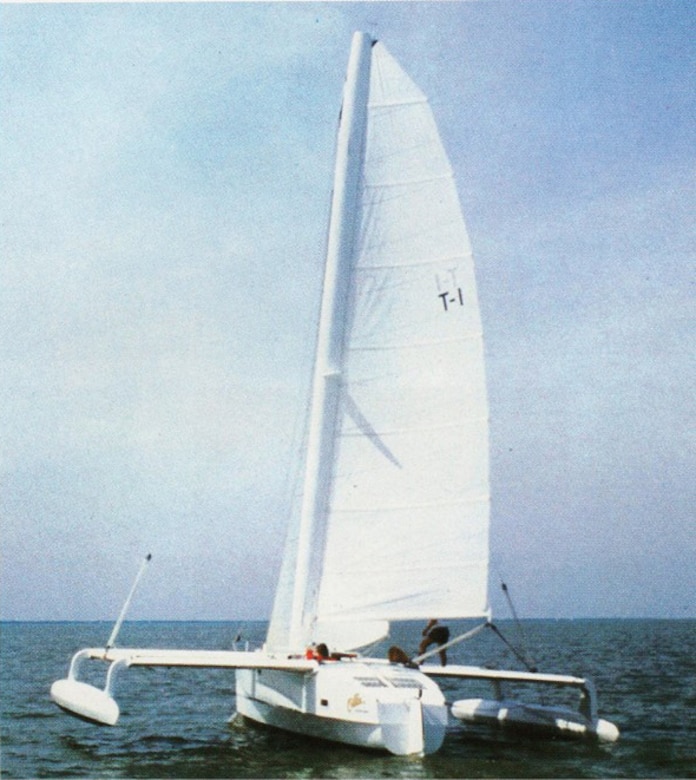
While racing his trimaran "Ollie," Jan Gougeon won the single-handed Super Mac race from Chicago to Port Huron in 1987 and the Great Lakes Singlehanded Society Peter Fisher Memorial Award in 1989.
He competed in the DN Iceboat World Gold Cup Championships over the course of four decades and took the cup home in 1975, 1982, 1985 and 1991. He also won the DN Great Cup of Siberia Race in Russia in 1989, and he won his eighth North American DN Iceboat Championship in 2000.
Gougeon competed annually in the Bayview Yacht Club's Port Huron to Mackinac Race, the Chicago Yacht Club's Race to Mackinac and the 300-mile Florida Everglades Challenge.
His last competition was in a Chicago Yacht Club Race to Mackinac aboard the newly launched "Strings" in July, 2012. He died Dec. 18, 2012, in Ann Arbor, Michigan at age 67.
July 27, 2021
On 27 July, United States Secretary of Defense Lloyd J. Austin III and Singapore Minister for Defence Dr Ng Eng Hen met at the Ministry of Defence during Secretary Austin’s introductory visit to Singapore.
Secretary Austin and Dr Ng reaffirmed both countries’ long-standing and multi-faceted bilateral defense relationship, which was most recently underscored by the signing of the 2019 Protocol of Amendment renewing the 1990 Memorandum of Understanding(MOU) Regarding United States Use of Facilities in Singapore and the signing of the MOU concerning the establishment of a Republic of Singapore Air Force Fighter Training Detachment in Guam. Secretary Austin thanked Singapore for the logistical support that it provides to U.S. military aircraft and vessels, as well as for facilitating the regular rotational deployment of U.S. Littoral Combat Ships and P-8 Poseidon aircraft. This support is anchored on the shared belief that the United States’ presence in the region is vital for its peace, prosperity, and stability. Secretary Austin and Dr Ng committed to continue discussions on U.S. force posture initiatives.
Secretary Austin and Dr Ng emphasized the strong U.S.-Singapore bilateral training relationship. This was demonstrated by both countries’ Armed Forces training together at recent bilateral exercises such as the 3rdExercise Pacific Griffin and the 40th Exercise Tiger Balm, multilateral exercises such as Exercise Rim of the Pacific and Exercise Red Flag – Nellis, and multiple professional and policy exchanges and interactions. They look forward to the continued resumption of physical interactions between the two defense establishments.
Secretary Austin emphasized that the Department of Defense values Singapore’s training presence inside the United States. Dr Ng and Secretary Austin noted that they look forward to new high-end bilateral training opportunities, including future cooperation as the United States hosts Singapore’s future F-35B fighter aircraft detachment. Dr Ng thanked Secretary Austin for the United States’ strong support in facilitating Singapore’s overseas training and exercises, which helps overcome its space constraints.
Secretary Austin and Dr Ng commended new and growing areas of cooperation in the bilateral partnership. These include Singapore’s establishment of the multilateral Counter-Terrorism Information Facility, for which the United States is a partner nation. Singapore was also pleased to join the multi-national Artificial Intelligence Partnership for Defense in May 2021, which aims to enable multilateral cooperation and exchange of best practices on responsible AI in the defense sector. Secretary Austin and Dr Ng expressed hope for further cooperation, including in areas such as cyber defense, strategic communications and Humanitarian Assistance and Disaster Relief.
Secretary Austin and Dr Ng discussed the regional security environment and agreed on the importance of sustaining a rules-based order. They also agreed to continue finding ways to expand the role of the U.S.-Singapore partnership in maintaining regional stability, such as through increased exchanges and training opportunities for the region's young defense leaders.
Marine Corps recruits participate in log drills at Marine Corps Recruit Depot, San Diego, July 19, 2021.
A Marine Corps AH-1Z Cobra conducts flight operations in support of exercise Talisman Saber 21 aboard the USS New Orleans in the Coral Sea, July 23, 2021. The large-scale bilateral exercise between Australia and the United States involves more than 17,000 participants from seven nations.